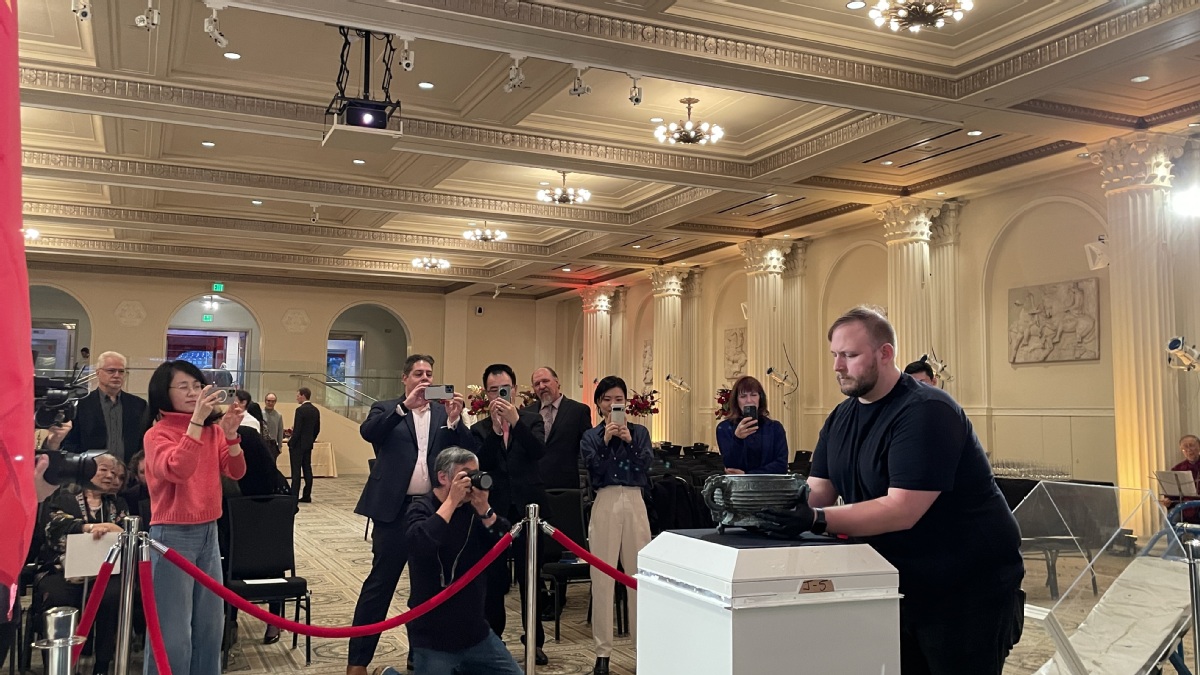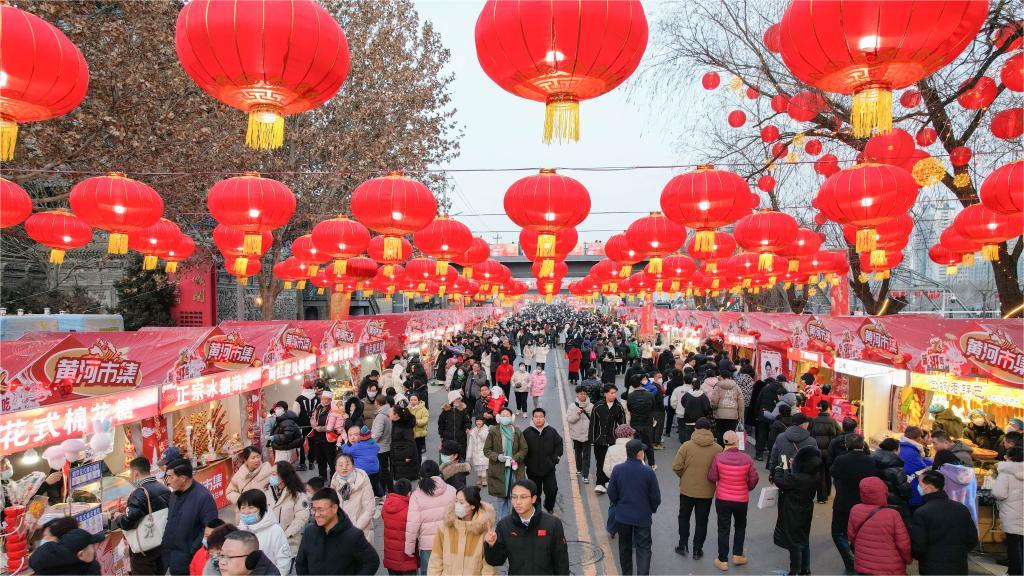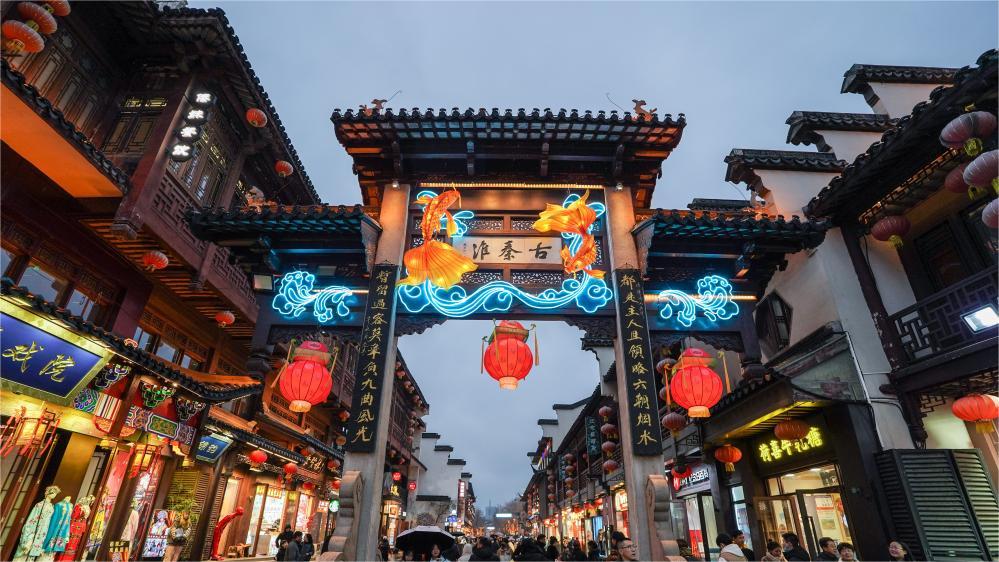Return of lost Western Zhou Dynasty relic bridges cultures
When Raymond King helped his mother clear out old belongings in her New York apartment, little did they know an unassuming bronze vessel, nestled among other antiques, was a lost treasure crafted at least 2,800 years ago in China.
King discovered its origin last year when he invited a researcher from Sotheby's auction house to look at his mother's collection. The next day he was told the bronze was stolen from China in 1984.
"My grandfather got it from a dealer … and then gave it to my mother," the Portland, Oregon-based entrepreneur told China Daily. "We had no idea (when and for how much it was bought), but once we understood it was stolen, my mom's reaction was just, 'Give it back.'"
The bronze ritual vessel, named "Feng Xingshu Gui", was crafted sometime between 877-771 BC in the Western Zhou Dynasty. Measuring 18 centimeters high (7 inches) and 21 centimeters (8.3 inches) in diameter, and weighing about 6 kilograms (13.2 pounds), it is composed of a large bowl adorned by double handles in the design of a coiled-nose animal face, resting on three animal-shaped feet.

A staff member prepares for the display of the relic "Feng Xingshu Gui" at a repatriation ceremony at the Portland Art Museum in Oregon last month. LIA ZHU / CHINA DAILY
It features abstract animal designs under the mouth and eave tile-shaped patterns on the waist.
An inscription was cast into the interior of the vessel, meaning "crafted by Xingshu of the Feng State, dedicated to his wife Boji, a treasure for all his generations to come''.
The Zhou Dynasty developed the practice of inscribing vessels, and such vessels are highly prized. The inscriptions were meant to communicate the owners' political and social achievements to their ancestors and for future generations to see.
Historians believe inscriptions are the single-most striking feature of the Zhou bronzes and were assiduously studied by later generations.
After it was stolen in 1984, China had never given up looking for it over the past 40 years, according to China's Deputy Minister of Culture and Tourism Li Qun.
"Raymond King and his mother resolutely decided to do the right thing. They agreed to unconditionally return the artifact to the Chinese government, an act that is truly admirable," Li said in a video message played at the repatriation ceremony held at the Portland Art Museum last month.
Also commendable was the international cooperation and a shared appreciation for the human cultural heritage, said Li, who is also the director of China's National Cultural Heritage Administration.

A staff member adjusts with great caution the bronze vessel "Feng Xingshu Gui" for a brief display at the Portland Art Museum on Jan 22, where a repatriation ceremony was held to welcome home the stolen Chinese relic. CHANG JUN / CHINA DAILY
The London-based Art Loss Register put Feng Xingshu Gui in its own database after Interpol listed it as stolen art in 2017. When the Sotheby's researcher contacted the company about the bronze vessel, the company informed the Chinese embassy in London and was later connected with the office for recovery and restitution of cultural property in Beijing.
Li said the repatriation of Feng Xingshu Gui is an example of different countries taking concerted action to fight illicit trafficking of cultural property. It is also an outcome of 15 years of US-China cooperation in cultural heritage protection, fostered by a memorandum of understanding first signed in 2009, he said.
Over the 15 years, many Americans, like King and his mother, have helped to return the Chinese artifacts lost abroad to the motherland, Li added.
The agreement, renewed twice in 2014 and 2019, has recently been extended for another five years. It will act as a guideline for US Customs and Border Protection officers to restrict the importing of certain archaeological materials from China.
Between 2009 and 2023, 504 Chinese cultural relics were returned from the United States to China on 15 occasions, thanks to bilateral judicial cooperation based on the agreement document.
"We will also remember and cherish the friendship of our American friends who have made this return possible," said Zhang, who presented King and his mother a certificate of donation for their generosity.
For King, the return wasn't a grand gesture, but a simple act of righting a wrong. "I don't think it's really ours to donate," he told China Daily. "I feel great that it's going to where it belongs. Maybe one day it'd be nice to visit the museum (where the relic is housed in China)."
Wang Kaihao in Beijing contributed to this story.
Photos
Related Stories
- Exploring the Chinese loong through culture and art
- Chinese vice premier meets with senior U.S. Treasury official
- Opening of Shanghai Museum East highlights ancient bronze culture
- China slams blatant collusion of U.S. officials with anti-China rioters
- Trending in China | Shuixiu dances
- Beijing, Washington in talks to stabilize economic ties
Copyright © 2024 People's Daily Online. All Rights Reserved.









